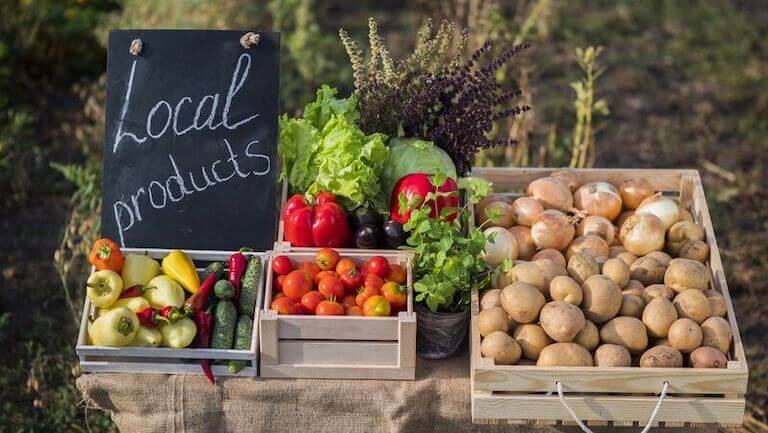Anyone who’s tried to find a good strawberry shortcake during the dead of winter in a snow-covered town intuitively understands the concept and appeal of a seasonal menu. That winter experience is vastly different from the one to be had in June, when the strawberries are a deep red and bursting with juicy sweetness.
For restaurant owners who want to deliver the latter experience, a seasonal menu can provide a way to produce memorable, top-notch flavors for your customers.
A seasonal menu is a limited time offering that uses in-season items, like fruits and vegetables that are at the height of freshness. Some restaurants, like Seasons 52, base their entire menus on the concept, although most use a mix, incorporating seasonal dishes and drinks into their year-round offerings.
A seasonal menu might also be a holiday menu—think Thanksgiving, Christmas, New Year’s Eve, and Easter, for example. Read on to find out more about how a seasonal menu can be good for business.
Benefits of a Seasonal Menu: Fresh, Interesting, Budget Friendly
A seasonal menu can provide your business with a number of benefits, from potential cost savings to marketing opportunities and community goodwill.
Seasonal Menus Can be Great Marketing Opportunities
Every business owner wants innovative and productive ways to keep in touch with their customers, and a seasonal menu can serve as an excellent excuse to do so.
It provides natural topics for an online presence, whether via updates to a website or content for social media posts. When done regularly, these updates can compel customers to keep checking in to find out what’s new. Business owners might even ask customers to participate by asking their opinion on new dishes, upcoming menu items, and to vote on what they liked best or to help name a new drink.
Limited-time offerings also add a built-in sense of urgency, which might prompt customers to come in sooner rather than holding off.
Seasonal items can make for great menu add-ons via special beverage pairings or a separate dessert menu, for example. And they provide a great opportunity for storytelling in your menu descriptions; consider the tie-ins to a local farm, an anecdote about a certain cuisine and what it means to the chef, or a favorite dessert that the owner used to make with their grandmother.
A Creative Chef is a Happy Chef
Because the ingredients are continually changing, chefs can create new dishes and put their creative juices to the test.
They can take seasonal items and try out new main dishes, side dishes, desserts, and drinks. The ability to regularly create new recipes is a way to keep boredom at bay, melding a restaurant’s go-to favorites with the vitality of fresh ideas.

Local produce can potentially cut costs and add flavor to seasonal menus.
Seasonal Ingredients Can Be Cost-Effective
During the growing season, suppliers can often have a surplus of ingredients, which can result in a lower purchase price. Those strawberries for strawberry shortcake will cost less in the northeast in June, for example, than they will in January.
Restaurant owners might forge relationships with local suppliers for even more of a bargain, agreeing to buy items in bulk. This scenario can be a boon for both businesses, as the restaurant finds a reliable and steady supply, and the supplier finds a steady customer.
With a seasonal menu, a restaurant is also less likely to have waste. Short-term offerings can be easier to plan for, resulting in less over-purchasing.
Locally Sourced Ingredients Support Sustainability and Can Create Goodwill
Local and in-season ingredients are the hallmarks of sustainability. Because they don’t need to be shipped long distances, they reduce transportation costs and emissions, and they take advantage of the natural growing seasons of an area.
Local ingredients also tap into the popularity of farm to table experiences. Many customers are interested in whether their favorite restaurants are making sustainable and ethical ingredient choices, and a seasonal menu can demonstrate a commitment to such. Partnering with area businesses can also help you build goodwill in the community, forging local connections and promoting other business owners.
Tips for Creating a Great Seasonal Menu
With a little forethought and creativity, you can create a seasonal menu that can delight customers and create perpetual buzz about what’s coming next. Some things to consider as you do so:
1. Plan ahead
Research to learn what’s in season and when so you can effectively brainstorm new dishes. A good understanding of flavor profiles will help, and a cost analysis can guide your decisions about whether your ideas can be profitable.
2. Make connections
Become familiar with local suppliers and vendors—they can help you anticipate what’s coming.
3. Be realistic
Understand what you can handle; a complete menu overhaul four times a year is probably too much for most restaurants, but what handful of items can you incorporate? What special desserts or drinks can you add?
4. Be bold
A seasonal menu only lasts so long. Allow yourself to try out an unusual food pairing or a recipe you’ve been tinkering with for a while. If it doesn’t work out, it’ll be gone with the season. But if it does, you could have a new hit dish!
5. Remember your menu design
Presentation can help your sales. Will you offer a separate menu with a handful of seasonal items, a chalkboard of listings, or perhaps a digital menu?
6. Educate your servers
Make sure your staff understands the offerings and can describe them and answer questions. You can include employees in the brainstorming to get more buy-in.
Examples of Seasonal Menu Items
The list of what’s in season varies by location, but in general we think of root vegetables in the fall and winter, summer corn and tomatoes, and spring peas. And although we might think of this less often, most meats have seasons as well, like lamb in the spring or chicken in the summer.
The U.S. Department of Agriculture has a handy seasonal produce guide to help you get started, and you can dive further into your particular region to find specifics.
Here are some ideas of dishes that can include a seasonal element:
- Fall and winter: pumpkin ravioli, roasted cauliflower, butternut squash soup
- Spring and summer: caprese salad, vegetable stir-fry, roasted chicken with seasonal vegetables
- Desserts: A variety of desserts featuring fresh fruit, like peach Melba, strawberry-rhubarb pie, mango sorbet, or fig tarts
- Drinks: A spiced cranberry drink in November and December or a maple cocktail (or mocktail) with muddled cranberries, cherry sangria, and any number of smoothie possibilities

Produce that is in season provides more flavor and better color
Find Out More About Restaurant Management and Menu Design
An education at Auguste Escoffier School of Culinary Arts—either at our Austin or Boulder campuses, or through our online programs—can give you in-depth knowledge about different foods and their flavor profiles as well as seasonality. You can also gain exposure to the business principles behind running a restaurant and can be a great opportunity to develop those practical skills alongside fundamental culinary techniques.
Financial aid, grants, and scholarships are available to those who apply and qualify, which can help make the opportunity to get an education that much more accessible.
When you’re ready to commit to a culinary education and all of the valuable experiences that can come with it, reach out to our team to get started with your application.
TO FIND OUT MORE ABOUT RESTAURANT MANAGEMENT, EXPLORE THESE ARTICLES:
- Restaurant Management 101: An Essential Guide
- How to Attract the Best Employees to Your Restaurant
- What is Zero-Waste Cooking?
*Information may not reflect every student’s experience. Results and outcomes may be based on several factors, such as geographical region or previous experience.
*This article was originally published Nov. 15, 2019, and has been updated.



